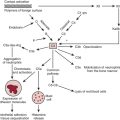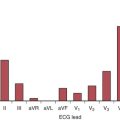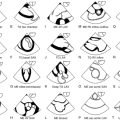Cryoglobulinemia, a condition characterized by the presence of strange proteins within the blood that clump together at bloodless temperatures, becomes as soon as shrouded in a diagnostic thriller. Historically, depending solely on bodily examination findings like skin discoloration and figuring out the protein clumping in a cold blood pattern had been the primary methods. but, these techniques lacked precision and sensitivity, frequently leading to delayed diagnoses and hindering timely remedy.
Thankfully, the sector of cryoglobulinemia analysis has witnessed a first-rate revolution in recent years. Technological advancements have delivered a new technology of accuracy, performance, and ultimately, advanced affected person consequences. Let’s delve deeper into this captivating journey, exploring the conventional methods and how cutting-edge technologies are reworking the panorama of cryoglobulinemia prognosis.
The traditional panorama: barriers and challenges
The conventional method of diagnosing cryoglobulinemia concerned a chain of assessments, every one with its own obstacles:
- Physical examination: Physicians searched for tell-tale signs like purpura (reddish-red skin lesions) at the legs, a symptom associated with cryoglobulinemia-associated vasculitis (infection of blood vessels). Even as this technique offered a short preliminary evaluation, it wasn’t conclusive and might be deceptive in a few instances.
- The cold Precipitation check: This check, considered the gold trend for cryoglobulinemia analysis for decades, worried about chilling a blood sample and observing for visible protein aggregation. However, its sensitivity turned into constrained, which means some cryoglobulins won’t precipitate at the particular temperature used. additionally, it could not differentiate among specific kinds of cryoglobulins, crucial for figuring out the underlying reason and finest remedy plan.
These limitations often resulted in:
- Not on time analysis: the paradox of traditional methods should lead to misdiagnosis or misdiagnosis of other conditions, delaying access to suitable remedy.
- Difficulties in monitoring: appropriately tracking disorder progression and treatment response changed into challenging, hindering powerful control.
- Constrained remedy alternatives: without a unique diagnosis, treatment techniques were often wide-spectrum, probably leading to pointless facet effects.
The upward thrust of Technological advancements: a new dawn in prognosis
Fortunately, the sphere of cryoglobulinemia diagnosis is no longer restricted to the constraints of the beyond. latest technological breakthroughs have ushered in a brand new generation of precision and clarity:
- Immunofixation Electrophoresis (IFE): This approach gives an extra targeted image of the protein’s gift inside the blood. It separates proteins based totally on their charge and length, making an allowance for the identity of specific forms of cryoglobulins. This stronger statistic is important for pinpointing the underlying motive, such as an underlying autoimmune ailment or infection.
- Immunohistochemistry (IHC): This approach goes past the blood, enabling the visualization of cryoglobulin deposits in tissue biopsies. This will be mainly useful in diagnosing cryoglobulinemic vasculitis, where the protein aggregates damage blood vessels in diverse organs.
- Advanced Chromatography Techniques: These techniques, which include excessive-overall performance liquid chromatography (HPLC), provide an exceptionally unique evaluation of the protein makeup of the cryoglobulin. This allows for the identity of precise protein fragments, in addition to aiding in diagnosis and treatment decisions.
- Go with the flow Cytometry: This generation makes use of lasers to investigate character cells in a blood sample. It can be used to perceive and characterize the unique cell types involved in cryoglobulin manufacturing, supplying precious insights into the underlying immune machine dysfunction.
- Genetic testing: In a few instances, genetic testing may be used to discover underlying genetic predispositions that would contribute to cryoglobulinemia improvement. These statistics may be vital for steering treatment decisions and circle of relatives counseling.
The blended use of those superior techniques permits a greater complete and correct analysis of cryoglobulinemia. This translates to numerous key advantages:
- Earlier and greater accurate analysis: Physicians can now diagnose cryoglobulinemia with greater confidence and at an earlier degree, mainly to prompt initiation of treatment.
- Improved tracking: those technologies allow for greater specific monitoring of disorder activity and remedy response, enabling physicians to modify remedy plans as wished.
- Targeted remedy strategies: With a clearer knowledge of the underlying motive and unique sort of cryoglobulinemia, medical doctors can pick out the maximum focused and powerful remedy strategies, minimizing side consequences.
The future of Cryoglobulinemia prognosis: continued Innovation and Personalized Care
The sector of cryoglobulinemia prognosis is constantly evolving. Researchers are actively exploring new avenues, together with:
- Biomarkers: figuring out unique biomarkers within the blood associated with cryoglobulinemia ought to cause the development of non-invasive diagnostic tests, making prognosis even more efficient and handy.
- Proteomic evaluation: This advanced approach analyzes the whole protein profile of a blood pattern, doubtlessly revealing new insights into the complicated






